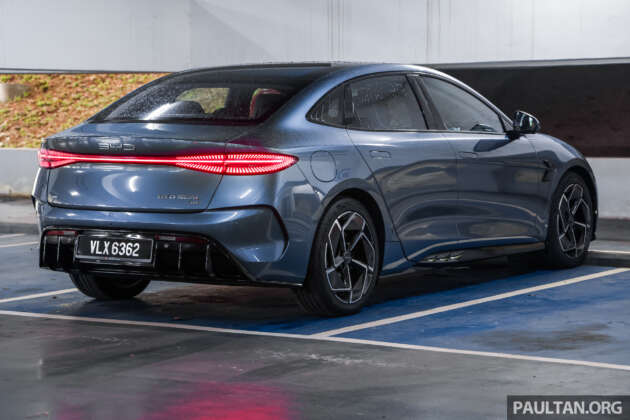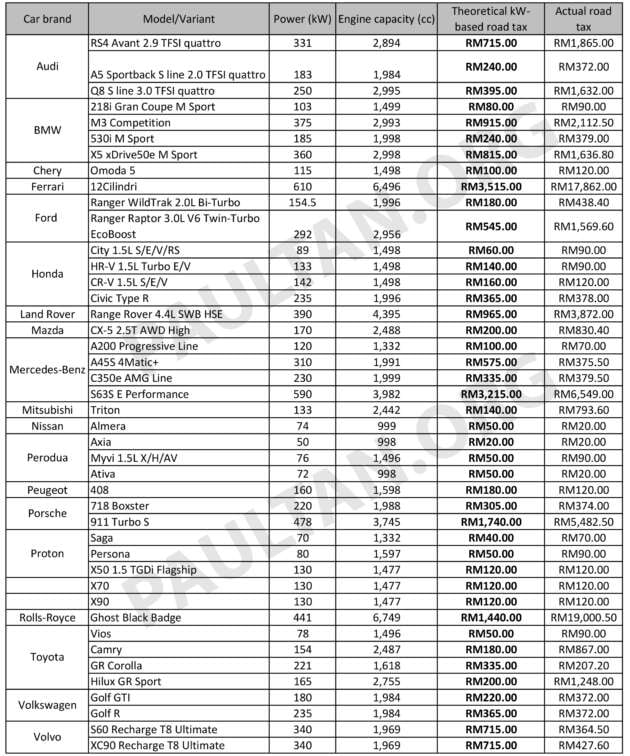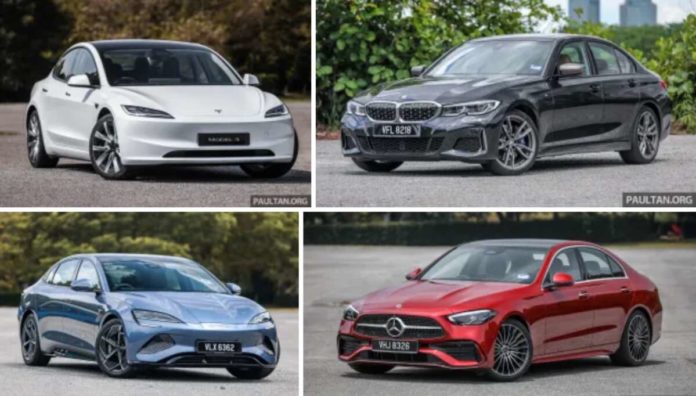


You must have already heard about the new road tax structure for electric vehicles (EVs), announced this week by the transport ministry. Set to be in place from January 1, 2026, the EV road tax structure replaces the previous template from 2019 and is meant to encourage EV adoption with rates that are comparatively lower than internal combustion engine (ICE) vehicles.
Unlike ICE vehicles that are taxed based on engine capacity, EVs don’t have engines, so what’s being measured with battery-powered cars are power, typically measured in kilowatts (kW) for EVs, as opposed to PS/hp, which is more common with ICE cars in Malaysia. One horsepower is equivalent to 0.746 kW, 100 hp = 74.6 kW.
The EVs are then grouped into different motor(s) output power bands, just like how it is with ‘cc’ for engines. We’ve already done a comprehensive explainer on the new EV road tax structure, and you can view it here along with a road tax list for all EVs currently sold in Malaysia.

But what about ICE vehicles, which the majority of Malaysians own, and will continue to own in the foreseeable future? Will there be a change in road tax calculation based on power instead of engine capacity? Unfortunately no, the government has confirmed. So, moving forward, EV road tax will be based on kW and ICE will continue with cubic capacity.
Which is antiquated. Even before EVs became mainstream here, holes have been punched through the cc-based ICE road tax format, first by downsized turbocharged engines and then plug-in hybrids. Both these powertrain developments ‘cheated the system’ with smaller capacity engines, supplemented by turbocharging or electric motors in the case of PHEVs to make up the power deficit.
Disparate examples include a RM90+k Nissan Almera paying the same RM20 road tax as a RM22k Perodua Axia E (both 1.0L), a Toyota Vios paying the same as a Honda HR-V Turbo (both 1.5L) and a Mercedes-Benz A200 (1.3L) paying less road tax than a Proton Persona (1.6L). A Toyota Camry owner forks out less for road tax than his friend with a BMW 530i too (RM867 vs RM379). An example of a small engine with very high output is the Mercedes-AMG A45S, which 2.0L engine puts out 421 PS.

A power-based road tax structure would also cover hybrids and PHEVs better, as currently, the electrified power in those cars aren’t taxed. That’s exactly how we had a RM1.2 million BMW i8 with sci-fi looks and scissor doors liable for just RM90 a year in road tax (1.5L engine), while a Mercedes-AMG GT (4.0L V8) owner coughed out RM6.5k per annum.
And then there’s the topic of old cars. Remember the days when the number on a car’s boot lid corresponded with its engine size? Those cars – mostly European – are now affordable (to purchase) and many still have plenty of life in them with some TLC, but high road tax in relation to the car’s current value holds many back. Many such old cars with large engines (but relatively low power in today’s context) are abandoned because it costs so much to keep them road legal.
Take a look at the list we compiled, which compares an ICE car’s theoretical kW-based road tax (just like for EVs) versus their actual road tax. Save for a few outliers – mostly PHEVs or cars with downsized turbo engines – many cars would have lower road tax, some substantially so. The biggest difference came from the pick-up trucks (Hilux and Triton, over 80% less) and supercars/luxury cars from Ferrari and Rolls-Royce (Ghost -92.4%). Is your car in the list? Check out how much you’d have to pay if road tax is based on power.


We understand that road tax is a big revenue generator for the government, which collected nearly RM3 billion from vehicle owners last year from this avenue alone, so it’s definitely not in their interest to reduce road tax, especially for high-end cars. As for those who are saying that road tax for EVs is still too expensive, we hope that this little exercise have given you some context.
Instead, the kW-based road tax system is favourable to EV adopters, which is in line with the government’s green agenda. Take this system and apply it on ICE cars – which the authorities have said there are no plans to – and we can see that road tax for a big portion of cars on the road will come down. If anyone should complain…
It’s ICE drivers, who are paying a higher tax compared to a similarly-powered EV, and we’re not even talking about torque and acceleration, the actual things that make an EV feel way more ‘powerful’ than what their kW figure suggests. It would be fair if road tax for ICE and EVs are measured on the same stick, but we’re not hopeful that this will happen, for the above-mentioned reasons. The current rates “are already low and reasonable,” Anthony Loke said.
Suggestions? ICE cars could adopt a kW-based road tax structure, but with higher rates than the current EV template. This would future-proof the structure against downsizing and electrification engine developments, while charging powerful engines more (rightly so). Ditching cc for power may see road tax revenue drop, but this could then be balanced by high-powered cars (the main beneficiaries of kW-based road tax) consuming more petrol, which blanket subsidy will be removed anytime now. What do you think?
Looking to sell your car? Sell it with Carro.

